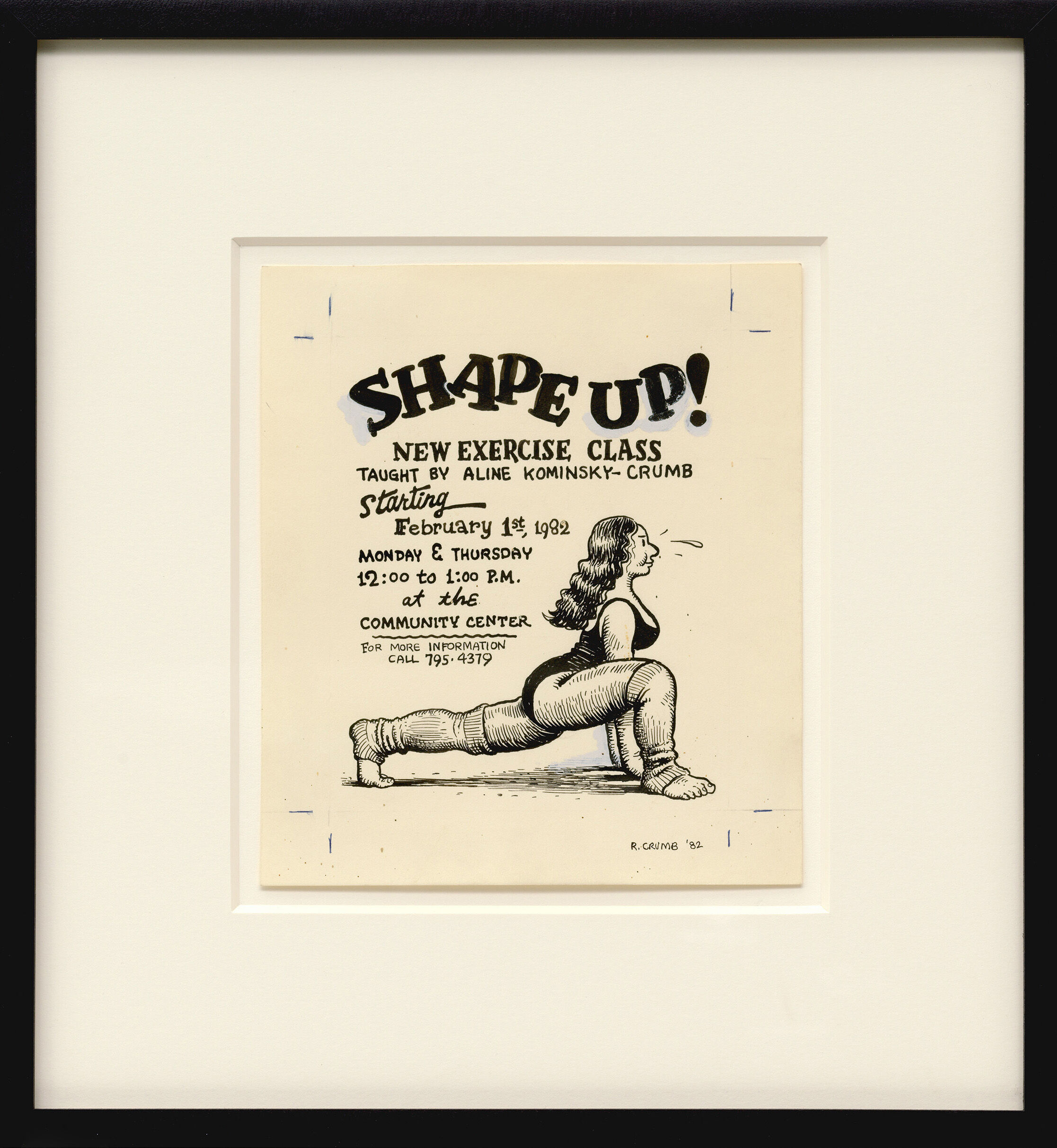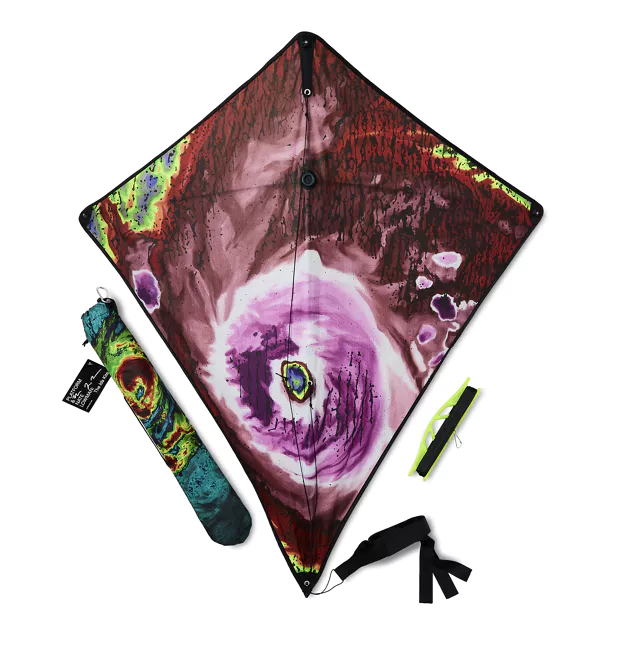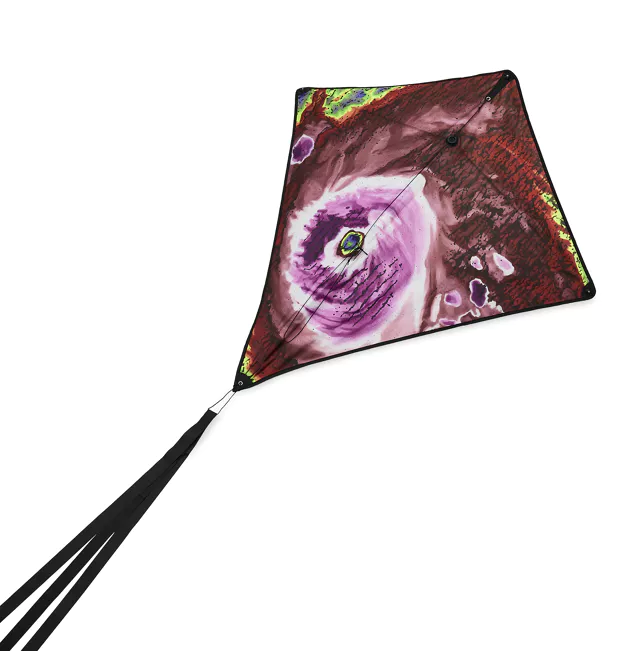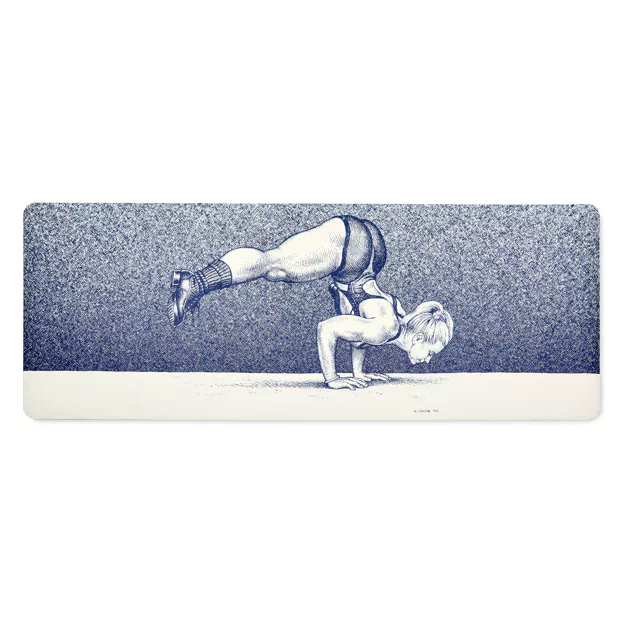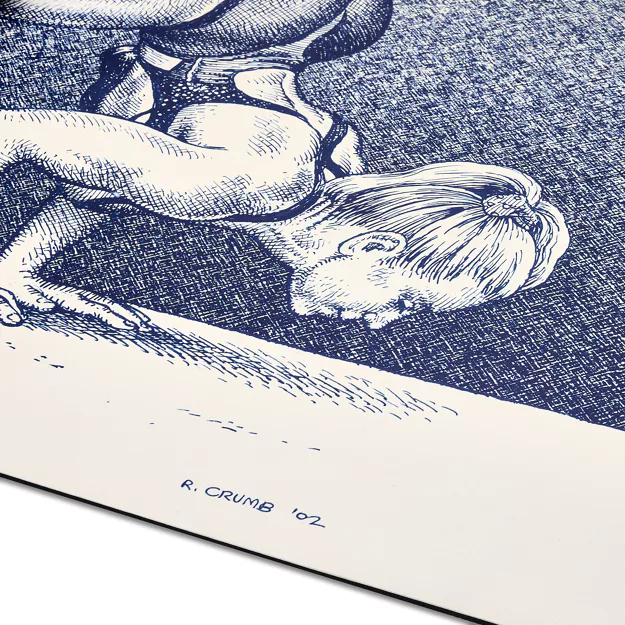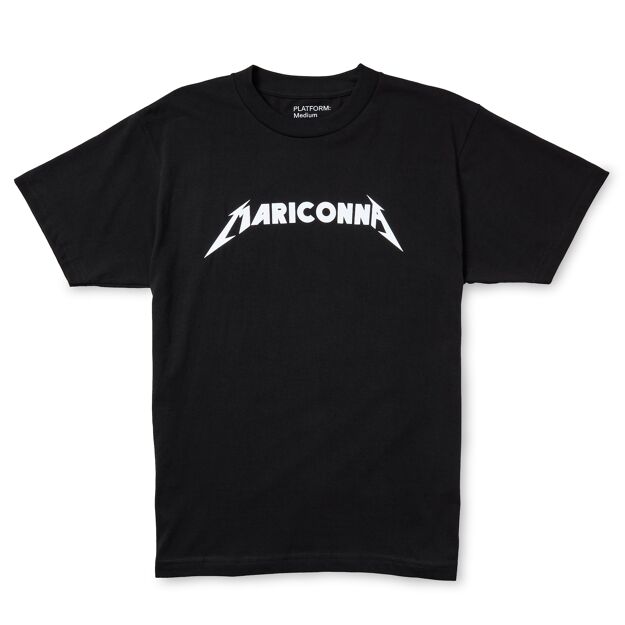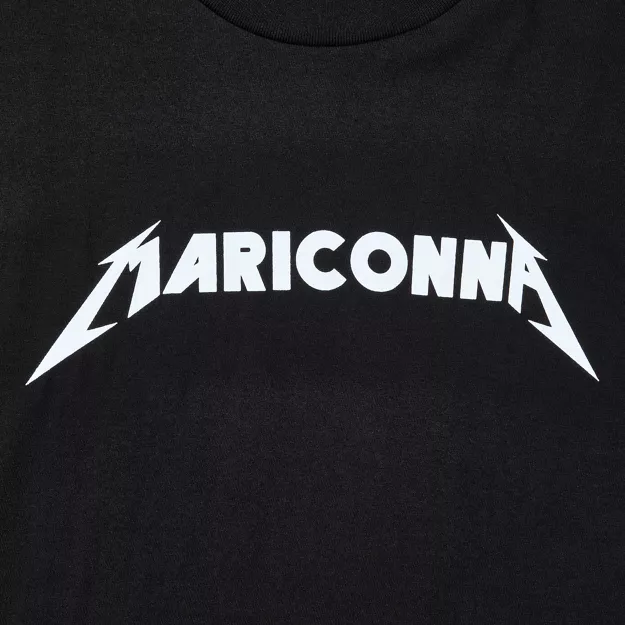About the artwork:
This drawing depicts artist Aline Kominsky-Crumb—R. Crumb's late wife—practicing yoga. Throughout her life, Kominsky-Crumb was an avid yogi and yoga teacher, and her husband made this drawing as an advertisement for an exercise class she led. Kominsky-Crumb acted as Crumb's primary muse across their 45-year relationship.
Through his art, R. Crumb has been dedicated to a relentless self-examination that includes his biases, hatred, love, and kinks. He belongs to a tradition of artists who have synthesized the world through drawing, from Annibale Caracci and Pieter Brueghel to Carroll Dunham, Peter Saul, Mike Kelly and Nicole Eisenman. A persistent chronicler, Crumb spent decades drawing and writing in journals, his unabashed self-expression flowing into his published comics.
About the artist:
As the undisputed godfather of underground comics, R. Crumb’s genre-defining comic strips of the '60s and '70s ushered in a new age of self-expression in his medium while redefining comics as a countercultural art form.
Born in 1943 in Philadelphia, Crumb moved to the Haight-Ashbury neighborhood of San Francisco, CA, during the height of the hippie movement in 1967 before settling in the South of France in 1991, where he has resided since.
Crumb has been the subject of solo exhibitions at institutions such as Musée d’Art Moderne de la Ville de Paris; Museum of American Illustration at the Society of Illustrators, New York; Whitechapel Gallery, London; Museum Boijmans Van Beuningen, Rotterdam; Museum Ludwig, Cologne; Yerba Buena Center for the Arts, San Francisco; Frye Art Museum, Seattle; Institute of Contemporary Art, Philadelphia; Massachusetts College of Art and Design, Boston; and the Grand Central Art Center, Santa Ana, California. Terry Zwigoff’s documentary Crumb was named the best film of 1994 by the late critic Gene Siskel and won the Grand Jury Prize at the Sundance Film Festival in 1995.
Work by the artist is represented in major museum collections worldwide, including the Brooklyn Museum, New York; Carnegie Museum of Art, Pittsburgh; Lucas Museum of Narrative Art, Los Angeles; Musée régional d'art contemporain Occitanie, Sérignan, France; Museum Ludwig, Cologne; and The Museum of Modern Art, New York, among others.
Through a pen-and-ink crosshatching style born from a fascination with 19th-century graphic drawing and engraving, Crumb sheds light on the absurdity of social conventions, political disillusionment, racial stereotypes, and his own sexual fantasies and fetishes. By expanding on the rich history of caricature to examine specific times in politics and society by artists such as Thomas Nast, James Gillray and William Hogarth, Crumb mines every aspect of his personal life to critique modern America and the myth of the American Dream.
Crumb's life has been dedicated to a relentless self-examination, including his biases, hatred, love, and kinks. In doing so, he is not condoning them but presenting them as a reflection of his environment, his upbringing, and what he sees as the rotten core of America. He belongs to a tradition of artists who synthesize the world through drawing, from Annibale Caracci and Pieter Brueghel to Carroll Dunham, Peter Saul, Mike Kelly and Nicole Eisenman. A persistent chronicler, Crumb spent decades drawing and writing in journals, and no thought, no matter how crude, was left unexposed. This unabashed self-expression flowed into his published comics, pushing the limits of his medium.
